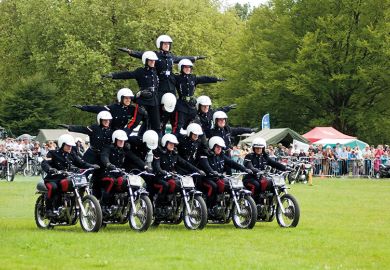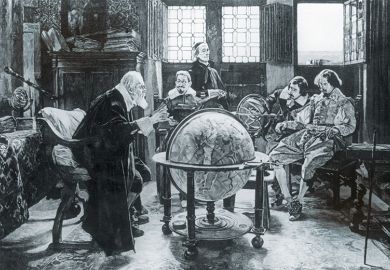“There are nine and sixty ways of constructing tribal lays: And every single one of them is right,” wrote Rudyard Kipling in his 1892 poem In the Neolithic Age. That there are also many routes to a rewarding career in applied science and engineering is one of the central messages of this absorbing volume.
At the core of the book are accounts, each typically 10 pages long, of how 36 individuals have seen their careers develop. Fifteen work in the private sector and are all classed as “entrepreneurs”; 10 are university academics; and the remainder work for a range of US government-funded entities, including national laboratories, Nasa and the Patent Office. Some are described as still “early career”, while others, including two Nobel laureates, have had long and distinguished careers. The book had its origins in a summer school organised by the US-based Fannie and John Hertz Foundation, which “supports the nation’s most remarkable PhD students in applied science and engineering”.
The progenitor of the book, Daniel Goodman, is one of the 36 who recount their stories. Like quite a few others, his background and early life gave him significant advantages, including a first degree from Princeton University. His career as a plasma physicist was shaped by the sudden closure in 1986 of a nuclear fusion project at the Lawrence Livermore National Laboratory, where he had expected to do a PhD. This convinced him that “working in the commercial sector was less risky than being dependent on Government Funding”. This proved a good choice for him, and the rest of his life does not seem to have involved many hard decisions.
Not so Jami Valentine, brought up by a single mother in Philadelphia. Starting her education in the city’s public school system, her difficult journey to a PhD took her through several schools, followed by degrees at Florida Agricultural and Mechanical University, Brown University and Johns Hopkins University in Baltimore. In 2006, she became one of only 30 or so African American women ever to have received a PhD in physics. Her story is both humbling and inspiring.
Goodman suggests that the individual stories presented in his book can together serve both as career guidance to students and as “life guidance” for individuals at any stage in their careers. Some of the questions the 36 have found it instructive to answer are applicable to all: “What gives me job satisfaction?” “Am I more interested in understanding the world or in creating new technology?” and “Do I like to be part of a team?” Other questions are more specific to individual circumstances: “Should I/can I radically change my research area?” “How can I adjust my work-life balance to accommodate having children (or playing the cello)?” “How do I find a mentor to offer me good career advice?” and “How do I deal with gender, racial or other forms of discrimination in my workplace?” However, because the 36 are very talented individuals, they have rarely had to ask themselves the difficult question, “Do my abilities match my career aspirations?”
Joyner’s First Law of Personal Growth is that most people spend far too little time thinking about their career development. This book offers a small but valuable corrective.
Richard Joyner is emeritus professor of chemistry at Nottingham Trent University.
Find Your Path: Unconventional Lessons from 36 Leading Scientists and Engineers
By Daniel Goodman
MIT Press, 408pp, £15.99
ISBN 9780262537544
Published 3 December 2019
POSTSCRIPT:
Print headline: Roads travelled, by their travellers
Register to continue
Why register?
- Registration is free and only takes a moment
- Once registered, you can read 3 articles a month
- Sign up for our newsletter
Subscribe
Or subscribe for unlimited access to:
- Unlimited access to news, views, insights & reviews
- Digital editions
- Digital access to THE’s university and college rankings analysis
Already registered or a current subscriber?






